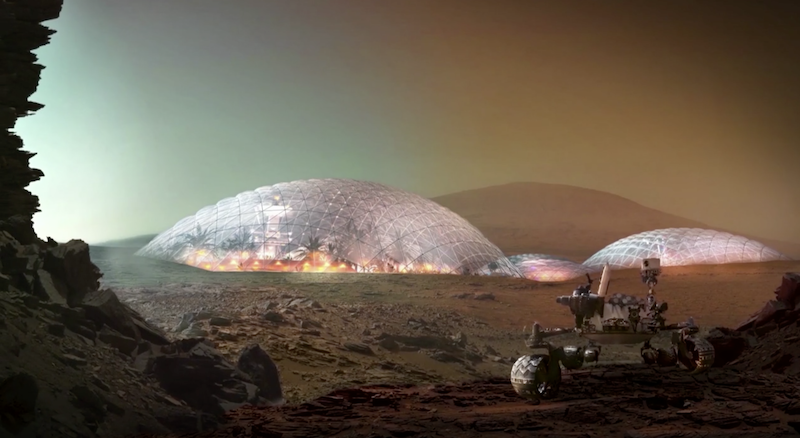Bjarke Ingels has joined the building-on-Mars party. BIG's prototype Martian city, dubbed Mars Science City, is designed to be an environment dedicated to the knowledge, education, and exhibition of the technologies necessary to inhabit mars.
But what's even the point of this discussion? Especially in times like those which we are currently experiencing, isn't the thought of building a city on Mars a bit quixotic? Perhaps, but as Ingels points out, of the 17 sustainable development goals of the United Nations, eight of them deal with the built environment. And when it comes to the built environment on Mars, sustainability is key.
The purpose of designing for Mars can be summed up in one word: innovation. The solutions architects, designers, scientists, researchers and the like come up with for living on Mars can and will help right here on Earth. Space travel has already given us dozens of innovations and inventions that we now use on an everyday basis; scratch-resistant lenses, shock absorbers for buildings, solar cells, and memory foam were all originally created to help solve a very specific problem associated with space travel.
As Ingels says in his talk, "The exact same principles and the exact same systems that will allow us to live on Mars are the very same that will allow us to be great custodians on earth."
See Also: Designing for the final frontier: Space architecture
Watch the entire presentation from Bjarke Ingels below.
Related Stories
Green | Nov 13, 2022
NREL report: Using photovoltaic modules with longer lifetimes is a better option than recycling
A new report from the U.S. National Renewable Energy Laboratory (NREL) says PV module lifetime extensions should be prioritized over closed-loop recycling to reduce demand for new materials.
Green | Nov 13, 2022
Global building emissions reached record levels in 2021
Carbon-dioxide emissions from building construction and operations hit an all-time high in 2021, according to the most recent data compiled by the Global Alliance for Buildings and Construction.
University Buildings | Nov 13, 2022
University of Washington opens mass timber business school building
Founders Hall at the University of Washington Foster School of Business, the first mass timber building at Seattle campus of Univ. of Washington, was recently completed. The 84,800-sf building creates a new hub for community, entrepreneurship, and innovation, according the project’s design architect LMN Architects.
Industry Research | Nov 8, 2022
U.S. metros take the lead in decarbonizing their built environments
A new JLL report evaluates the goals and actions of 18 cities.
Green | Nov 8, 2022
USGBC and IWBI will develop dual certification pathways for LEED and WELL
The U.S. Green Building Council (USGBC) and the International WELL Building Institute (IWBI) will expand their strategic partnership to develop dual certification pathways for LEED and WELL.
Wood | Nov 1, 2022
A European manufacturer says its engineered wood products can store carbon for decades
Metsä Wood, a Finland-based manufacturer of engineered wood products, says its sustainable, material-efficient products can store carbon for decades, helping to combat climate change.
40 Under 40 | Oct 19, 2022
Meet the 40 Under 40 class of 2022
Each year, the editors of Building Design+Construction honor 40 architects engineers, contractors, and real estate developers as BD+C 40 Under 40 awards winners. These AEC professionals are recognized for their career achievements, passion for the AEC profession, involvement with AEC industry organizations, and service to their communities.
Green | Oct 5, 2022
In California, a public power provider’s new headquarters serves as a test case for an innovative microgrid and for reducing greenhouse gas emissions
Sonoma Clean Power (SCP), the public power provider for California’s Sonoma and Mendocino Counties, recently unveiled its new all-electric headquarters.
Resiliency | Sep 30, 2022
Designing buildings for wildfire defensibility
Wold Architects and Engineers' Senior Planner Ryan Downs, AIA, talks about how to make structures and communities more fire-resistant.
| Sep 23, 2022
High projected demand for new housing prompts debate on best climate-friendly materials
The number of people living in cities could increase to 80% of the total population by 2100. That could require more new construction between now and 2050 than all the construction done since the start of the industrial revolution.

















